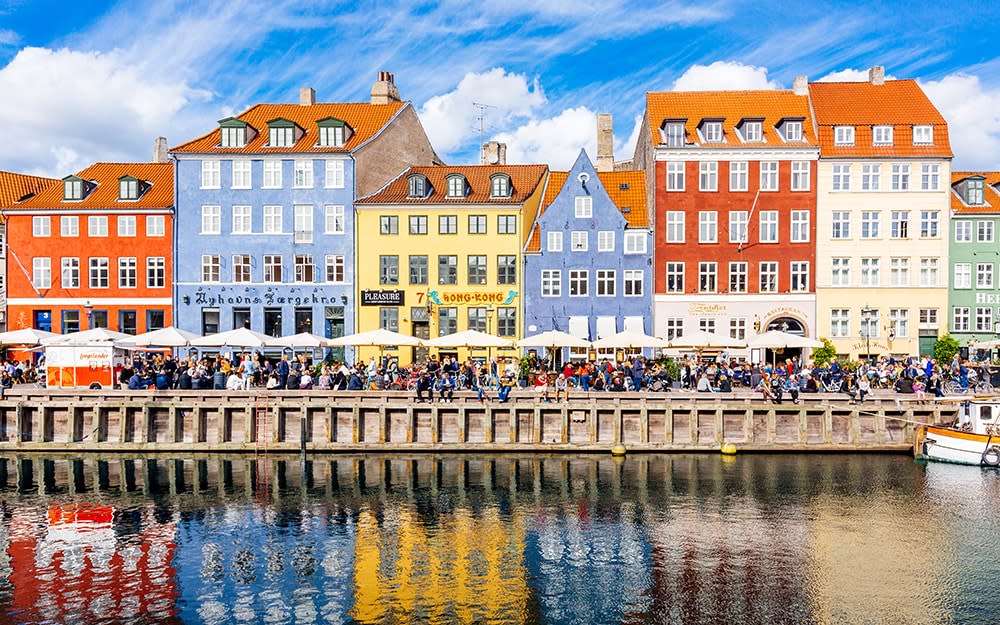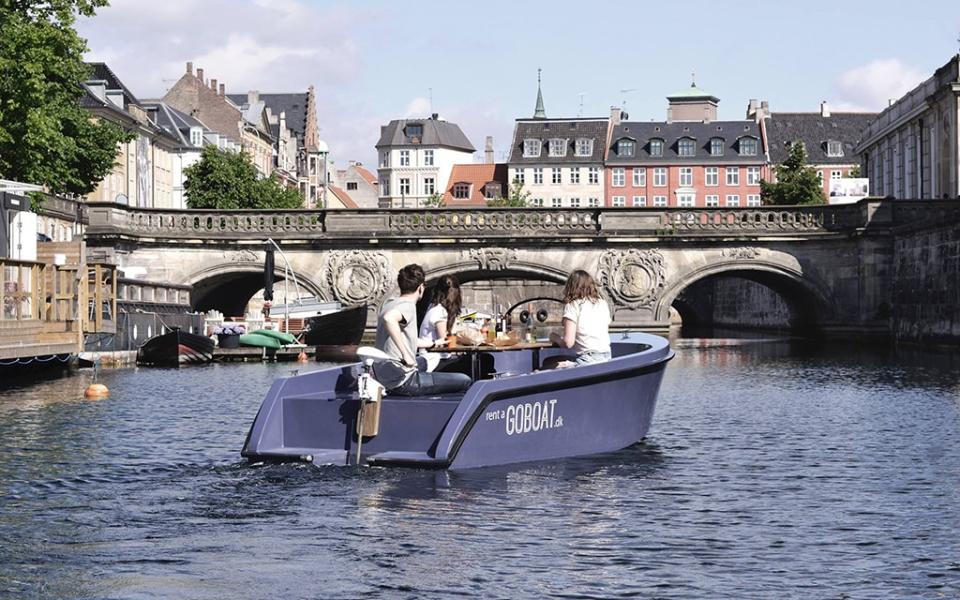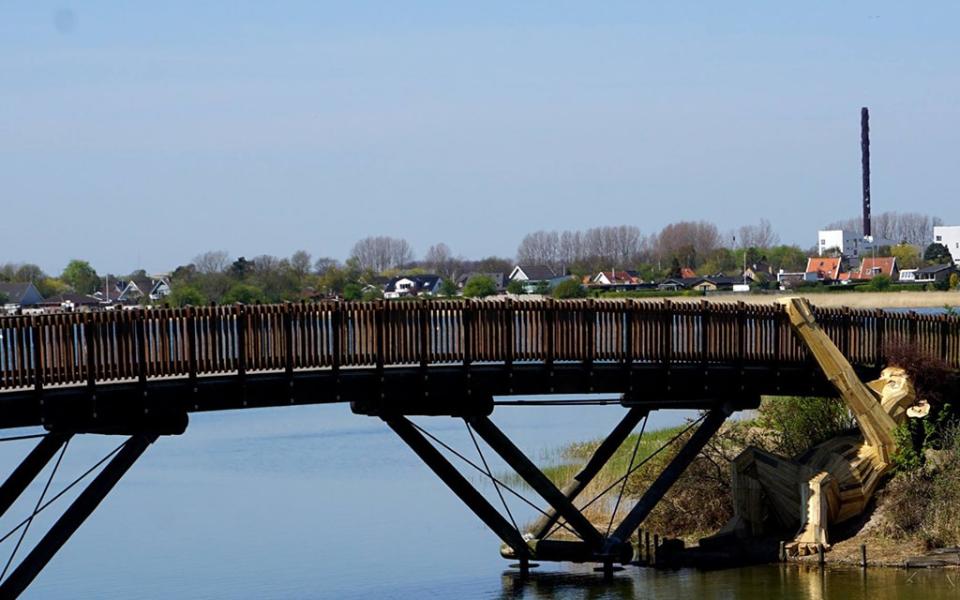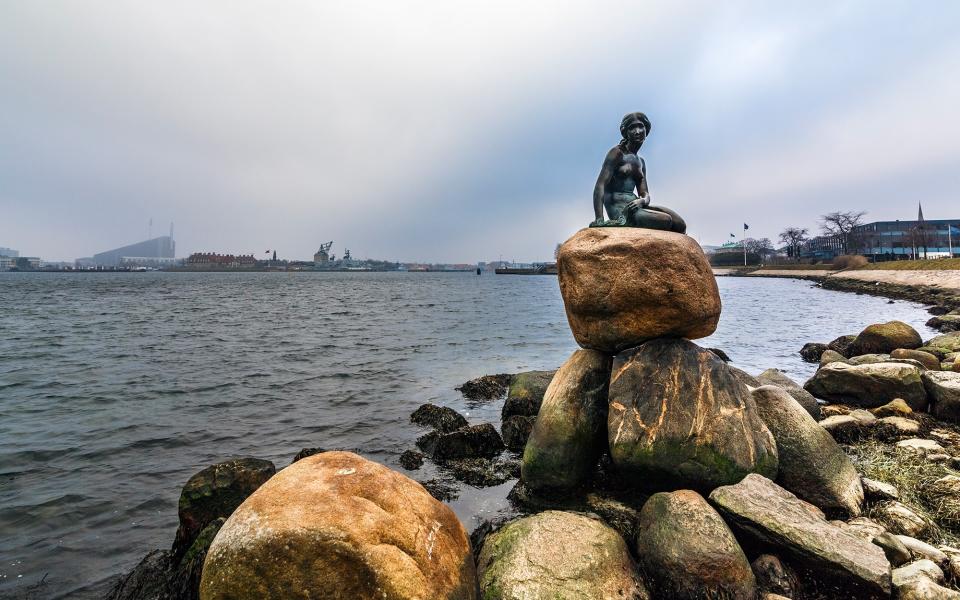10 reasons to visit Denmark – the country that turned happiness into an art

Never mind hygge. There’s another buzzword in Denmark these days: samfundssind. It’s the Danish term for public spirit or collective responsibility, the notion that the greater communal good outweighs individual interests. It’s one of the core values of Danish society and, along with high levels of trust (in each other and in the authorities), is a key contributor to the country’s famously contented outlook on life.
So when Danish prime minister Mette Frederiksen announced on March 11 that Denmark was going into lockdown and called on Danes to show samfundssind, that’s exactly what they did, largely abiding by all the rules and restrictions and banding together to help make the whole experience as bearable as possible.
The hospitality industry was quick to rally to the cause. At Alchemist, Rasmus Munk switched from preparing multi-course menus to supplying meals for the city’s homeless, via his charity JunkFood. At noma, where diners normally pay hundreds of pounds a head, René Redzepi temporarily turned the restaurant garden into a casual drop-in eatery, serving burgers at 150 krone (£18) a pop, and set up an emergency fund to provide financial help to former employees in need. Other Michelin-starred restaurants rustled up takeaway menus for the first time – you could order in creamy lobster bisque from Marchal, say, or top-notch Thai dishes from Kiin Kiin – while Curfew created cocktails-to-go for people to enjoy on walks around the nearby lakes.
Across the country, people came up with creative ways to lighten the lockdown load. Empty car parks hosted drive-in concerts, cinemas and stand-up comedy shows; people put teddy bears in windows for local children to spot; and on television station DR (the state broadcaster), conductor Phillip Faber led the nation in daily communal song. In the capital, street food market Reffen streamed live sunset DJ sets; “Copenhagen Wrapped in Flowers” saw major landmarks bedecked with beautiful floral installations; and while big attractions such as Tivoli and Copenhagen Zoo remained closed to the public, they opened their doors to local schools each day, acting as temporary venues for lucky kindergarten classes.
The huge Roskilde Festival might have been cancelled this year but on what would have been its final day, July 4, the organisers encouraged people to have a mini DIY festival at home, supplying everything from playlists and previous years’ footage to recipes for favourite festival foods.
In the early days of lockdown, a Copenhagen friend emailed me: “Bet you wish you’d got trapped over here instead of there, don’t you?” She was right. As the UK bumbled from one disaster to the next, Denmark showed how different things could be, given a government that acted swiftly and nobly resisted any urges to go on vision-testing road trips. As well as earning international admiration, the country’s competent handling of the crisis has also sparked increased interest from holidaymakers, with a noticeable rise in visitor numbers and enquiries at visitdenmark.com, the tourist board website.
So as the country gets set for summer, here are 10 reasons why Denmark deserves top spot on your post-lockdown travel wishlist.
1. Beautiful beaches
Nowhere in Denmark is more than 32 miles from the coast, much of which is lined with glorious, unspoilt beaches. For wild beauty, it’s hard to beat the west coast of Jutland, where broad swathes of bleached white sand stretch for mile upon empty mile, backed by dunes and lagoons and dotted with the kind of charmingly nostalgic old seaside hotels that inspired the hit TV series Seaside Hotel (aka “the Danish Downton”), currently streaming on All 4. Further east, on the North Zealand shore, the Copenhagen set decamp to the chic summer houses of the Danish Riviera, with its traditional fishing towns, soft white sands, retro beach huts and coastal trails that wind through forests of pine and banks of wild roses.

2. Pedal power
Many Brits took to two wheels for the first time during lockdown, but Denmark has a long-established cycling culture, making this the perfect place for a biking holiday. It’s especially appealing for novices, with easy bike hire, around 7,500 miles of cycle lanes, and largely flat landscapes – but if you fancy a challenge, head to the region around Vejle, where you can test your thighs on some of Denmark’s largest hills and try out 16 new Super Routes. Go soon and you’ll be ahead of the pack who will come pedalling this way when the Tour de France Grand Départ takes place in Denmark next year.

3. Island hopping
You don’t have to head to the Med to go island hopping. Denmark, too, has islands aplenty, where you can enjoy a gentler pace of life and discover pretty villages of cobbled streets lined with colourful cottages, hollyhocks and roses. Plentiful ferry, tunnel and bridge links make it easy to hop around and soak up a flavour of the different islands, from the fairytale castles of Fyn to the dramatic white coastal cliffs and fossil-hunting possibilities of Moen (home to Scandinavia’s only International Dark Sky Park) or the increasingly cool Bornholm, flung out in the Baltic, where the craft and culinary scenes are thriving.

4. Fabulous food
New Nordic has become the new normal in Denmark, and there’s a real focus on using ingredients that are sustainable, seasonal and locally grown – which in summer includes the tastiest little new potatoes and peas, sweet berries and cherries, and the first of the new season apples. The Danish coastline delivers an abundance of excellent seafood, including lobster and prawns, world-class oysters from the Limfjord, and that menu staple, herring, served every which way and accompanied by an akvavit shot. The pastries are legendary, the ice cream is superb and the cheeses – specifically the artisan cheeses produced by Arla Unika – are a revelation.
5. Nature parks
Danes have a strong affinity with the natural world, and the great outdoors is at the heart of some of the country’s newest attractions. Last month saw the opening in Jutland of both Wow Park Billund, a wild al fresco playground of rope swings and aerial trampolines, and Naturkraft, a sustainability theme park with interactive experiences designed to increase our understanding of the forces of nature. At Camp Adventure in Zealand, the striking new Forest Tower takes you along a spiralling 650m (710-yard) ramp, up through the forest canopy, to a platform with far-reaching views. Book into one of the camp’s new glamping tents and you’ll get round-the-clock tower access.

6. Water ways
Copenhagen is cool at any time of year but really buzzes during the summer months, when the waterfront comes into its own, offering a whole host of activities to enjoy in, on and around the water, from swimming in the harbour baths to jumping into one of Copenhot’s floating hot tubs. Hire a GoBoat for a self-drive tour round the canals; take a trip with Hey Captain, which supplies a skipper to do the steering and guiding; or book a Green Kayak and get a free trip in exchange for picking up any floating litter you find.

7. Open-air culture
Most museums and galleries are up and running, but if you’d prefer to avoid indoor venues there’s no shortage of places to get an outdoor culture fix. North of Copenhagen, the gardens at Louisiana Museum of Modern Art are filled with a collection of 50 modern sculptures, joined this summer by three new works, including a sound installation from former Turner Prize winner Susan Philipsz. In Aarhus, the impressive Den Gamle By, or Old Town, gathers together historic buildings from around Denmark at one large site; and city centre Aalborg serves as an outdoor gallery.
8. Hidden trolls
In 2016, artist Thomas Dambo created six “Forgotten Giants” – huge troll sculptures made out of salvaged wood and hidden away in the Copenhagen countryside. Since then he has been commissioned to create many more around the world but this summer he is back in Denmark, collaborating with volunteers to create 10 more trolls at secret locations around the country. The first three are in the Copenhagen area with more to follow in Fanoe, Aalborg, Silkeborg and Odense, but to find the exact locations you need to go on a troll treasure hunt.

9. Vikings galore
Denmark offers plenty of scope for immersing yourself in the world of ancient Norse explorers. New this summer at Lejre Land of Legends is the King’s Hall, a recreation of the country’s largest Viking-era building, constructed from more than 1,000 tons of oak and decorated with mythological characters and creatures. In nearby Roskilde, you can see reconstructed ancient vessels at the Viking Ship Museum, while Aalborg is home to Lindholm Hoeje, where the remains of hundreds of Viking graves are strewn around a grassy hillside.
10. Fewer crowds and lower prices
Copenhagen’s cruise port brings thousands of visitors to the city every summer and when the big ships are in, the most popular attractions quickly get crowded. This year, though, the port is closed to cruise passengers until Aug 31, so viewing the Little Mermaid and strolling the quayside at Nyhavn should be a temporarily more serene experience. Until Aug 9, there is half-price entry to many cultural experiences, including museums and theatres.



